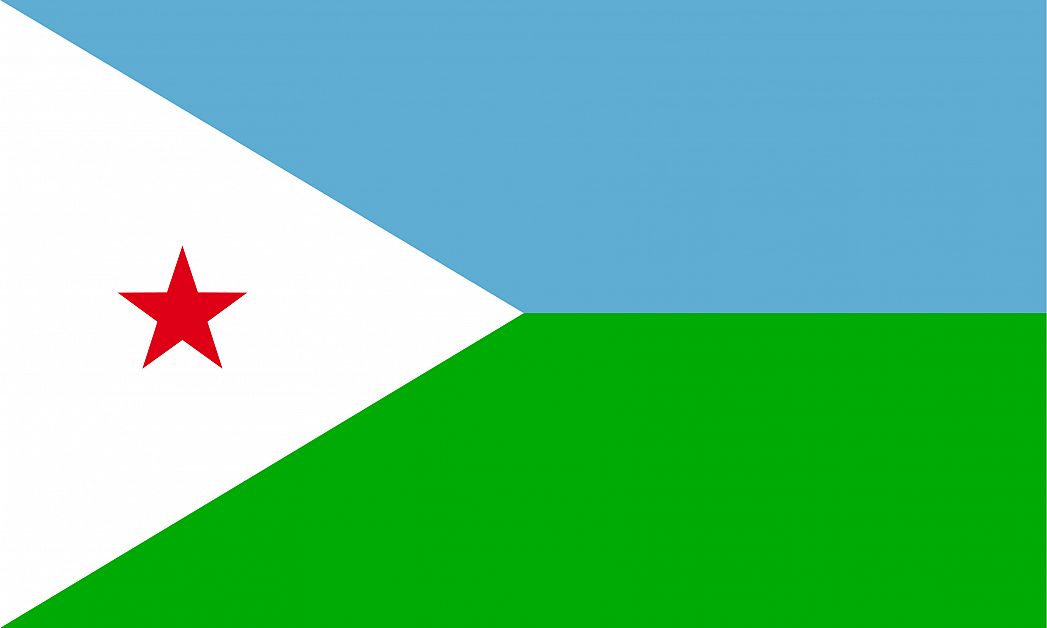The flag of Djibouti consists of two horizontal stripes of light blue (top) and green (bottom) with a white triangular wedge on the mast side that intersects both stripes. The white triangle contains a red, five-pointed star in the centre. This flag became the official national banner of the country on 27 July 1977 after the nation declared independence from France. This flag is known as Calanka Jabuuti in Somali and Drapeau de Djibouti in French.
The light blue is a representation of the clear skies and Gulf of Aden as well as the Issa Somalis peoples, a tribal clan with roots in the country that stretches back centuries. The green is a symbol of the earth and agricultural traditions, in addition, the green is also associated with the Afar peoples. The first written mention of this ethnic group occurred during the 13th century. The white triangle is symbolic of peace and the red star is a symbol of the people who fought, and died, for independence in Djibouti.
Mahamoud Harbi, a politician, designed the national flag that is used today. Harbi was the Vice President of French Somaliland (the area that contained Djibouti), as well as a prominent independence advocate. He was exiled to Cairo in 1960 and died in mysterious circumstances while promoting independence for the area in 1961.
Previous flags of the nation include the flag of the Adal Sultanate, a multi-ethnic medieval Muslim state which Djibouti was a part of from 1415 until the mid-1500s. The banner of the Ottoman Empire was flown from 1554-1872 while the region was known as Habesh Eyalet - this area also included modern-day Eritrea, Saudi Arabia, Somalia, and Sudan in its territory. The flag of France was flown in the area from 1896-1977 while the region was known as French Somaliland.
This page was last modified on May 1st, 2018
More on Graphicmaps

Published on 2019-11-06
What is a Trade Embargo?

Published on 2019-11-04
Which Two Countries Used to Have the Same Flag?

Published on 2019-09-16
What Is the Only Two-Sided State Flag?

Published on 2019-09-16
Which Country Flag Looks Like the Texas Flag?

Published on 2019-08-29
Flags That Resemble the US Flag

Published on 2019-08-20
